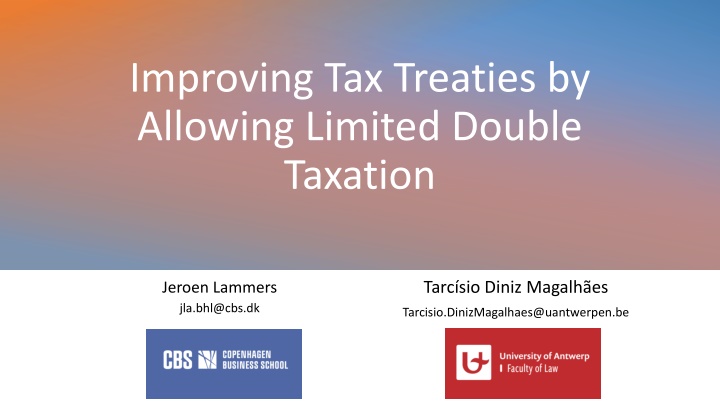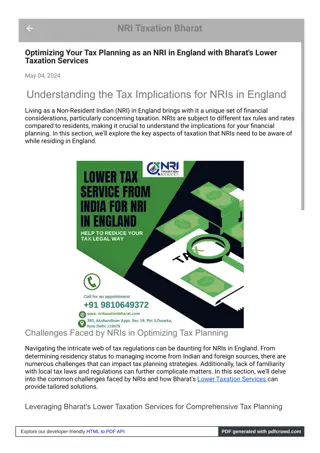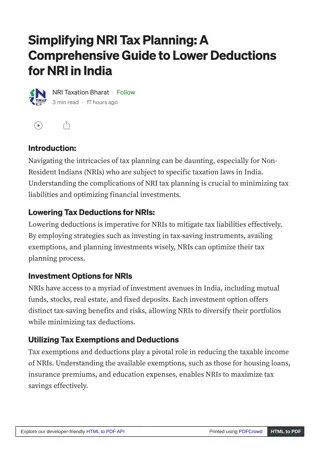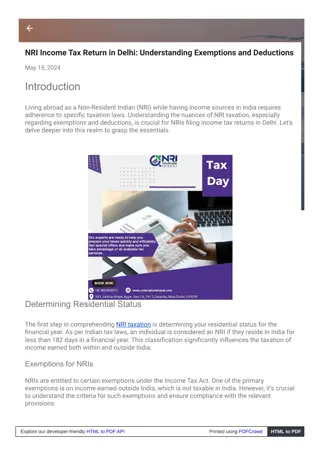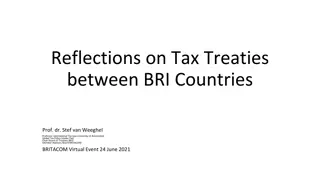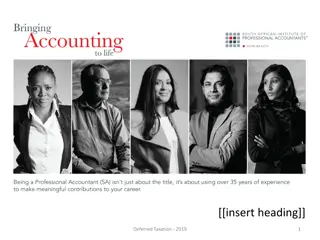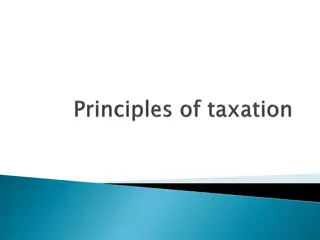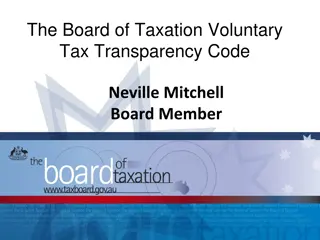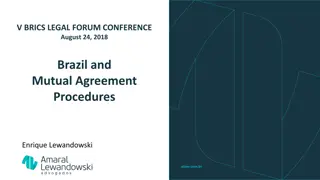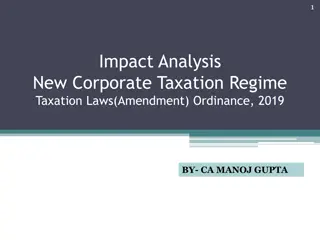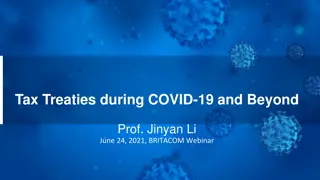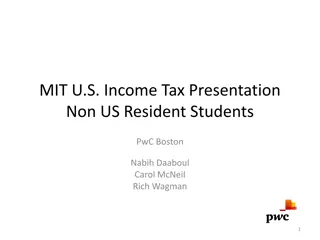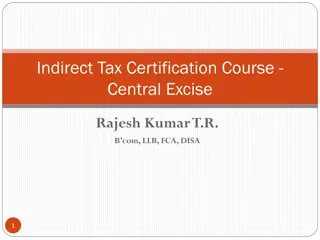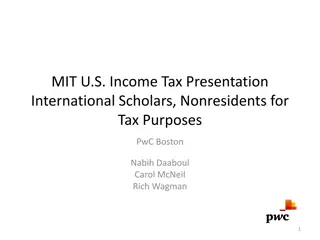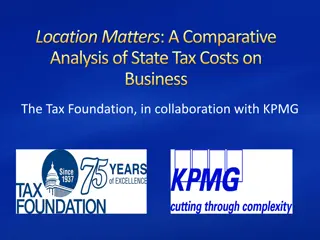Improving Tax Treaties by Allowing Limited Double Taxation
This content discusses the challenges with tax treaties, double taxation, and the need for simplified mechanisms to enhance clarity, reduce costs, and ensure legal certainty in international tax practices.
Download Presentation

Please find below an Image/Link to download the presentation.
The content on the website is provided AS IS for your information and personal use only. It may not be sold, licensed, or shared on other websites without obtaining consent from the author.If you encounter any issues during the download, it is possible that the publisher has removed the file from their server.
You are allowed to download the files provided on this website for personal or commercial use, subject to the condition that they are used lawfully. All files are the property of their respective owners.
The content on the website is provided AS IS for your information and personal use only. It may not be sold, licensed, or shared on other websites without obtaining consent from the author.
E N D
Presentation Transcript
Improving Tax Treaties by Allowing Limited Double Taxation Tarc sio Diniz Magalh es Jeroen Lammers jla.bhl@cbs.dk Tarcisio.DinizMagalhaes@uantwerpen.be
Whats wrong with tax treaties? Dividends Other income Interests Schedular structure: complex, costly, and risky for double nontaxation. Business Income Automated services Royalties Pro-capital exporting states: treaties shift from a system that is source-based by default to a system that is residence- based by design. Technical services Rent Mgmt fees
What about double taxation? Are treaties needed to prevent double tax? Does double tax restrict FDI? Is double tax normatively bad? Unilateral measures (FTC/exemption) already provided by most residence states. Literature on tax treaties & FDI: largely inconclusive. Literature on FDI determinants: rule of law, infrastructure, labor costs/human capital, consumer market, R&D, conflicts/corruption. Studies on int l double tax & FDI: what matters is the overall burden (better to be taxed 10 times at 1% than 1 time at 20%). Assets are often multiple taxed. Unfairness is about unequal/discriminatory taxation (horizontal equity) or excessive/confiscatory taxation. Single tax can lead to double dipping and free riding by MNEs.
A simplified mechanism Treaty partners agree to a reduced percentage of the company s relevant profits (e.g., 20%) to be always allocated to source without reducing the percentage of the profits that is allocated to residence. Why? Source states wouldn t have to depend on PE to tax. Pillar 1 is too complex while gains for developing countries are uncertain. Formulary apportionment requires new system that is unlikely in the near future. Simplifying existing treaties increases legal certainty and reduces costs.
Rule design Same as Article 7 of the OECD Model, i.e., covering all cross- border business income No reason for ring-fencing Scope rule No granular, transaction-by- transaction approach. Pillar 1 threshold: EUR 1m, or EUR 250.000 for countries with GDP <EUR 40b. Nexus rule Lump-sum approach: treaty sets a percentage (e.g., 20%) of business income that can be double taxed (by residence and source states). Trade-off between precision and complexity. Income allocation
Legal certainty The mechanism should be as clear and unambiguous as possible. The allowed double taxation may not exceed the agreed upon percentage on a global level. Eligible Source jurisdictions share the extra 20% of the tax base equally. Equal sharing is based on pragmatic and theoretical considerations.
Double taxation should not be an obstacle for making tax treaties fairer and easier to apply.
